
Understanding Passivation, Depassivation, and Recovery Procedure in LiSOCl2 Batteries
LiSOCl2 (lithium-thionyl chloride) batteries are widely valued for their high energy density, long service life, and broad temperature tolerance. However, these batteries are prone to passivation, a condition that can affect device functionality if not addressed properly. Below, we’ll cover what passivation is, why it happens, and how depassivation techniques restore battery performance. We’ll also discuss common challenges and practical solutions when using LiSOCl2 batteries.
What is Passivation in LiSOCl2 Batteries?
| Passivation is a naturally occurring phenomenon in LiSOCl2 cells, where a thin lithium chloride (LiCl) layer forms on the anode surface. This passivation layer acts as a protective barrier, reducing the chemical reactivity between the lithium anode and the thionyl chloride electrolyte. While beneficial for maintaining the battery’s longevity and safety against hazards such as internal short circuits, passivation can lead to a temporary increase in internal resistance. This, in turn, may cause voltage delays or drops when the battery is first activated. |
Benefits of Passivation:
- Extended shelf life: By limiting self-discharge, passivation prolongs battery life, making LiSOCl2 batteries ideal for long-term, low-maintenance applications such as emergency power systems, military-grade equipment, and medical devices.
- Enhanced safety: The passivation layer reduces the likelihood of unwanted reactions between the anode and electrolyte, preventing risks of overheating, rupture, or, in rare cases, explosion.
Drawbacks of Passivation:
- Voltage delay: Passivation can cause a delay between battery activation and reaching the required voltage, potentially affecting correct device functionality in some devices.
- Voltage drop: During initial use, a sudden voltage drop may occur, causing unreliable performance or possible device malfunction.
- Reduced capacity: If passivation is not properly managed, the battery’s effective capacity can be compromised.
These effects are especially impactful for devices requiring immediate high current or precise voltage immediately after startup, such as GPS trackers, emergency location transmitters, and certain medical instruments.
What is Depassivation of LiSOCl2 Batteries?
| Depassivation is a controlled process that disrupts the LiCl layer, restoring the battery’s optimal performance. Proper depassivation is essential before the first use of LiSOCl2 batteries to ensure they meet the power requirements of the device. |
Depassivation Techniques for LiSOCl2 Batteries: A Step-by-Step Guide
- Pulse load application: Apply short, high-current pulses to the battery. These brief pulses generate heat and energy to break down the LiCl passivation layer, bringing the battery back to the original operating condition.
- Gradual current increase: Instead of applying a sudden load, gradually increase the current into the battery. This gradual increase effectively dissolves the passivation layer while minimizing voltage drop.
- Rest period: In some cases, simply allowing the battery to rest briefly after the first connection can reduce the initial voltage delay, as the battery may partially recover on its own.
| “Proper depassivation allows us to proactively manage the performance of LiSOCl2 batteries, ensuring reliable device functionality and maximizing battery life,” explains Pavel Kováč, Product Manager at SOS Electronic. |
Recommendations to Mitigate Passivation Effects
- Avoid prolonged inactivity: Long periods of inactivity can intensify passivation. To prevent this, periodically activate the battery if it will be stored for extended durations.
- Store in optimal conditions: Keep LiSOCl2 batteries in a cool, dry environment, avoiding extreme temperatures that could worsen passivation.
- Choose quality products: Not all LiSOCl2 batteries are equal. Higher-quality batteries from reputable manufacturers handle passivation better and deliver more consistent performance.
CAUTION:
Depassivation requires technical skill and precision, it should be performed by qualified personnel with electrical expertise. Always use appropriate personal protective equipment and adhere to relevant local safety guidelines.
Depassivation may involve subjecting the battery cells to a brief load which reduces internal resistance temporarily and activates the battery. However, this process must be carried out with care in a controlled environment to avoid overheating or potential cell damage. Manufacturers may also recommend specific procedures, so it’s crucial to consult and follow the technical documentation provided with the battery.
A wide selection of LiSOCl2 batteries is readily available on our website, ready to support your projects. If you are looking for different types of batteries, we are happy to supply them on order under favourable terms.
Your feedback helps us create truly useful content for our readers. Appreciate the above information with an imaginary contribution for this article.
If you have any questions or comments, please don't hesitate to contact us. Thanks again for your time and trust.
Interested in more information or technical assistance in choosing suitable batteries? Have a question or specific request? Don’t hesitate to reach out, we are here to help!
Do you like our articles? Do not miss any of them! You do not have to worry about anything, we will arrange delivery to you.
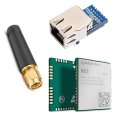
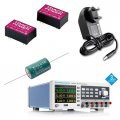
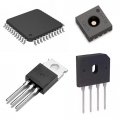


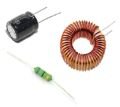
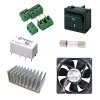


















![Primary Batteries - ER14505 P (ER14505P[CNA]) EVE ENERGY ER14505 P (ER14505P[CNA]) EVE ENERGY](http://cdn.soselectronic.com/imagecache/product-list/9e/0f/155bcbbb/er14505-p-er14505p-cna.jpg)









